BinTrade — honest, ad-free review: pros, cons and real alternatives (2025)
BinTrade is a young binary options broker that has drawn attention with promises of high returns and fast payouts. From the first steps it sparks debate: some users see a chance for quick gains, others suspect fraud. In this review, we examine what BinTrade is, what conditions it offers traders, and why there is so much controversy around it. I’ve been trading the Forex, CFD and binary options markets for over 11 years and know how to spot an unreliable platform. You’d be surprised how often I see beginners repeat the same mistakes when they trust loud promises. Let’s find out whether BinTrade is among trustworthy companies or just another binary scam.
Contents
- Introduction: what is known about the BinTrade broker
- Key facts about BinTrade: company and license
- The BinTrade trading platform and its capabilities
- Account types and client statuses on BinTrade
- Trading conditions on BinTrade: deposits, trades, payouts
- Claimed advantages of BinTrade: what the broker promises
- Deposits and withdrawals: how to fund and cash out from BinTrade
- Bonuses and promotions on BinTrade: what clients get
- BinTrade affiliate program: earning from referrals
- Registration and verification on BinTrade: step by step
- BinTrade support: quality and contact methods
- BinTrade’s reputation: analysis of real client reviews
- Key risks and warnings: what experts and regulators say
- Comparing BinTrade with competitors: Quotex, Binomo, Pocket Option, Stockity, Binolla
- Tips and alternatives for traders: how to protect yourself
- BinTrade FAQ (frequently asked questions)
- Conclusion: final assessment of BinTrade
Introduction: what is known about the BinTrade broker
BinTrade started operating around 2020. The company positions itself as a binary trading platform that lets you earn on price moves of various assets. The official website (formerly bintradeclub.ru and a number of other domains) targets Russian-speaking traders. BinTrade’s marketing promises up to 90% return on a single trade, instant payouts, and a convenient terminal with many indicators. Such claims sound enticing: who wouldn’t want to earn nearly half again as much as invested in a couple of minutes?
However, red flags emerged quickly. Online, reviews began to multiply accusing the broker of fraud — from being unable to withdraw funds to accounts being blocked without cause. On the other hand, questionable sites publish positive feedback praising the platform’s convenience and profitability. This polarization should raise caution. Why do some see BinTrade as a path to financial freedom while others see a trap? Next we look at the facts about the company and assess how much it can be trusted.
Key facts about BinTrade: company and license
What’s behind the BinTrade brand? The broker is operated by the offshore company Traders Club Ltd., registered in Belize (Central America). A legal address is listed in Belize City, and the founding year is given as 2019 (per a corporate certificate) or 2020 (per domain data). That certificate is posted on the site and presented as a “brokerage license,” but in fact it’s only an offshore company registration. BinTrade has no real regulator’s license — its activities are not supervised by the Belize IFSC nor by authorities in Russia, the EU, the US or elsewhere. The broker confidently claims that an offshore registration alone is enough for transparency and client protection. In practice, the lack of regulation is a major risk factor, which we’ll discuss in the reliability section.
BinTrade’s target audience is mainly traders from Russia and the CIS. The platform and support operate in Russian and English, and most advertising goes through Russian-language social networks (a VKontakte group with ~15k followers, etc.). In Europe and the US, binary options have long been restricted or banned for retail, so BinTrade focuses on markets where this activity isn’t directly prohibited. The broker doesn’t publicize the names of its management or traders — owner anonymity raises transparency questions.
The company’s reputation had already drawn official attention by 2024: the Bank of Russia added BinTrade (under various domains) to its blacklist of illegal financial entities on April 10, 2024. This means the regulator saw signs of unlawful activity (in this case, an unlicensed securities market participant). We’ll examine how justified these concerns are.
Overall, BinTrade’s positioning rests on promises of easy money: the company offers “financial freedom for every user,” a handy platform “for any device,” and even risk-free practice on a demo account. But flashy slogans often hide crucial details — licensing, real-world track record, and fine print. BinTrade struggles here: there’s no regulation and no information about owners or finances. The broker operates from an offshore jurisdiction without legal protection for clients. Meanwhile the target audience is newcomers attracted by high-return promises. From the start, the risk is obvious: an offshore company promises the moon with no guarantees.
The BinTrade trading platform and its capabilities
One of the broker’s key products is its proprietary trading platform. According to the company, the terminal is multiplatform and available on all devices: you can trade via the web on desktop, install a Windows app, and use mobile apps for Android and iOS. Such device coverage is a plus for traders who want access 24/7. The interface is described as intuitive and modern, with a “pleasant design.” Even beginners, the developers say, will figure it out quickly.
Functionality. BinTrade claims the platform is equipped with a broad set of technical indicators and analysis tools. Traders get charts (likely candlestick and line) with trend indicators, oscillators, and multiple timeframes. Marketing mentions additional analytics and even community features (rankings, badges, trader “duels”), hinting at gamification. There’s also 24/7 support inside the terminal (a chatbot or live chat with agents) according to the claims.
It’s hard to verify everything without registering — guests see limited information. A demo account is available immediately and free, letting you test the interface. Judging by reviews, the platform indeed has the standard features for binary options: choosing an asset, setting expiry, trade amount, and Up/Down buttons. Trades are done in one click, and order execution is advertised as instant (no slippage).
Multitasking? Can you track several charts or assets at once? This isn’t stated explicitly, but most browser-based options platforms show only one chart per screen. BinTrade is likely no exception — to work across multiple assets you’ll probably open several windows/tabs.
Mobile adaptation appears solid. Traders note that you can place trades from a smartphone without limitations: the interface is optimized for small screens, with all core buttons and charts available. Educational materials are present too: the site offers webinars, ebooks, a glossary, and daily analytics. For beginners this is useful, though no guide replaces experience and sober risk control.
Overall, the BinTrade platform looks competitive against peers from a technical standpoint. It has all the basics for binary trading plus convenience features (indicators, analytics, demo). But the main question isn’t interface convenience — it’s execution integrity. If a broker wants to skew results, the prettiest terminal won’t save you. Later we’ll review feedback where clients suspect the platform isn’t transparent. For now — what accounts and conditions does BinTrade offer?
Account types and client statuses on BinTrade
BinTrade effectively offers no choice of accounts — conditions are the same for everyone. The company states there’s a single trading account type — Live Account (real account). At registration you automatically get a standard account that you can fund and trade. The minimum deposit to activate a real account is 500 rubles, roughly $7–8 — a genuinely low entry bar aimed at beginners. A low start is part of the broker’s strategy: attract as many clients as possible with small sums.
A demo account is offered separately — a risk-free practice mode. It’s free for anyone, even without funding. On demo, you operate with virtual money (e.g., 10,000 rubles) in conditions close to real ones. Of course, on demo things usually go smoothly and profitably — a point even watchdog articles note. It’s psychological: initial “wins” on demo nudge beginners into switching to real money. Remember that live trading can be entirely different; doubling a demo balance doesn’t guarantee success on a Live Account.
Status levels. Many competitors (e.g., Binomo, Pocket Option) offer account tiers — from basic to VIP — depending on deposit size. Tiers bring perks: higher option payouts, cashback, a personal manager, etc. Open sources show no clear information about tiers at BinTrade. Likely there are no formal tiers — everyone starts with the same conditions. Community mentions of ranks and awards suggest gamification: active traders may get levels or titles (e.g., “Newbie,” “Pro”), and there may be duels. There’s no confirmed data that such ranks improve terms (like higher payouts). It’s probably just engagement mechanics.
You don’t choose an account type at signup — you register once and receive a standard trading account. What happens next depends on your activity and balance. If you deposit a large amount, a personal manager might offer some VIP-style terms (e.g., bonuses or faster withdrawal). Officially, though, the site lists only one account for everyone.
In short: BinTrade emphasizes simplicity — one account for all plus a demo to learn. That’s easy for beginners. But the lack of transparent tiering is also concerning: it’s unclear what terms larger clients get and whether different rules apply. The broker likely handles “special cases” ad hoc — not a hallmark of reliability.
Trading conditions on BinTrade: deposits, trades, payouts
Here are the broker’s trading terms for binary options:
- Minimum deposit. You can start with 500 RUB (about $7). That’s very low — among the lowest on the market. Competitors usually require $10 or $50, while here the amount is almost symbolic. Of course, 500 rubles won’t take you far, but it’s enough for first steps. There’s no official maximum deposit — you could fund 100,000 rubles or more if your payment method allows. However, putting large sums into an untested platform is extremely risky. Experienced traders advise: start with the minimum, test withdrawals, and only then consider larger sums (if at all).
- Account currency. You can open an account in RUB, USD, or certain CIS currencies. If you fund in a different currency, the money will be converted. Keep in mind possible conversion fees and FX spreads.
- Minimum trade (position) size. The minimum trade is 50 rubles. Many brokers set $1 (about 70 rubles). BinTrade is slightly lower so a 500-ruble balance can cover at least 10 positions. For reference, Binomo allows trades from $1, Pocket Option — from $1, and Quotex — from $1. Most likely BinTrade’s minimum is ~$1 in ruble terms. The maximum trade size isn’t disclosed; on similar platforms it’s often several thousand dollars, though few risk that per click.
- Number of simultaneous trades. No published limits. Typically you can open many trades in parallel if your balance and risk rules allow. Some platforms cap concurrent positions (e.g., 10–20). BinTrade provides no data; likely you can open as many as your balance covers — but remember that stacking many options can wipe a balance fast if forecasts fail.
- Option payouts. A key parameter. BinTrade advertises up to 80–90% returns per trade. The percentage depends on asset and market conditions. For major FX pairs in calm periods they may offer ~80%, and during high volatility — up to 90%. If you place 1,000 ₽ and the forecast is correct, you receive 1,800–1,900 ₽ (stake return + 800–900 profit). If wrong — you lose the 1,000 ₽. For comparison, Quotex offers up to 95% on some assets, Binomo — up to 90%, Pocket Option — up to 92%. So BinTrade’s terms are broadly in line with the market, though the cap is slightly lower than the top performers. The broker claims fixed and transparent payouts per pair with no hidden fees. In practice traders note that payout percentages can change during the day at the broker’s discretion. For example, during low activity payouts may be reduced across the board.
- Expiry times. The expiry range matters for strategy. Unfortunately, BinTrade doesn’t publish it. We can assume short “turbo” options from 60 seconds and standard periods: 5 minutes, 15 minutes, 1 hour, perhaps 24 hours. Some modern platforms offer ultra-short 5-second trades, but there’s no mention of that here. Likely the minimum expiry is 1 minute, maximum several hours or a day. The absence of clear data suggests the broker may focus on very short trades to fuel excitement. We recommend beginners avoid ultra-short intervals — outcomes there are almost random.
- Available assets. BinTrade lets you trade on price changes of various underlyings. According to the site, that includes Forex pairs and some cryptocurrencies. So you can speculate on EUR/RUB, USD/JPY, BTC/USD, etc. A full asset list isn’t public — unusual, since brokers usually boast hundreds. This suggests a narrow lineup. Likely you get major FX pairs (USD, EUR, RUB, GBP, JPY in combinations), a few popular cryptos (Bitcoin, Ether), and perhaps a limited set of commodities or indices. Competitors offer much more: Quotex and Pocket Option list 100+ assets (Apple stock, gold, oil futures, S&P 500, etc.). If BinTrade’s list is indeed modest, that’s a negative — less diversification. For newcomers, focusing on a few pairs can be simpler.
- Fees and spreads. Classic binary options don’t charge per-trade commissions — the broker’s edge is paying out less than 100% (the statistical margin). BinTrade states it charges no fees for operations: not for trades, not for deposits/withdrawals. Spreads don’t apply in the usual sense — the option price is fixed at purchase. Hidden costs may exist: inactivity fees (after months of no trading), currency conversion, certain withdrawal methods, etc. These rarely appear in ads but can lurk in the user agreement. It’s known the minimum withdrawal is also 500 rubles, and the broker says it doesn’t take a withdrawal fee — though payment systems (banks, wallets) may charge their own.
In sum, BinTrade’s trading terms look attractive for a beginner: low deposit, small trade sizes, high payouts, no obvious fees. This paints an image of an ideal platform — “put in a couple thousand rubles and build a fortune.” Reality is less rosy. High returns come with high risk. And without oversight, a broker can change terms any time. Today it pays 85%, tomorrow 50%, or restricts withdrawals. Without a regulator, it’s not prohibited. Treat sweet terms with skepticism. Next we’ll see what BinTrade itself touts as advantages — and how those claims hold up.
Claimed advantages of BinTrade: what the broker promises
On its site and in promo materials, BinTrade lists a set of advantages meant to persuade traders to choose this online broker. Let’s go through the main claims and comment on them:
- High trade profitability. BinTrade advertises payouts up to 85–90% on most major assets. That’s very high — in traditional Forex trading, a 90% profit in a single position is rare, while here it’s positioned as typical. Yes, high fixed payouts are part of binary options, and BinTrade aims not to lag rivals. In practice, as noted, payouts are dynamic and can be lower. The broker promises “high profitability for all FX pairs (up to 85%),” but doesn’t stress that 85% is a maximum under ideal conditions; 60% is common. Bottom line: attractive yet ordinary for the niche, not unique.
- Low entry threshold. “Investing is open to everyone thanks to a 500-rubles deposit,” BinTrade boasts. True — 500 ₽ is accessible to almost any adult. The broker emphasizes that you can start small. Compared to stock markets, the bar is lower. This is a plus — and a trap for the inexperienced. A tiny deposit lowers psychological caution: “I’ll try; it’s a small amount.” Many do just that, ignoring the risks. As a result, the number of “victims” grows; each loses a bit, and the company accrues a tidy profit. Verdict: low deposit helps you start, but also serves as bait.
- Convenient, intuitive platform. The broker advertises an innovative interface built for any device, with fast order execution. As covered above, reviews suggest the interface is convenient and not overloaded. Binary options are simple by design — two buttons, a chart, an amount. BinTrade adds indicators and analytics for advanced users. An “intuitive interface” is indeed helpful, especially for those who don’t want a complex terminal. Verdict: a real advantage — the platform is easy for basic use.
- Wide choice of indicators and analytics. The company touts “a broad range of indicators, tools, and analytics.” On charts you’ll likely find moving averages, RSI, Bollinger Bands, and trend lines. BinTrade also mentions educational content: market overviews, news, webinars. For a binary trading platform this is a plus — many rivals offer only a terminal. Here they claim an “education hub”: glossary, ebooks, daily market notes. This should help newcomers. Verdict: having education and indicators is a plus, though quality is unknown; at least they aim to look “professional.”
- Transparency and security. BinTrade assures transparent client relations and prioritizes protection of funds and data. It mentions modern encryption protecting the site and accounts, and KYC/AML policies. The broker seeks to appear law-abiding: we verify identities, secure data, comply with AML — you can trust us. In reality, the absence of a regulator undercuts these promises. One can talk about transparency and still hide owner identities and financials — where’s the transparency? Verdict: HTTPS and encryption are baseline today, not a distinctive advantage. Transparency claims are debatable.
- Fast deposits and withdrawals. Marketing claims fast payouts — “from 10 minutes.” Instant withdrawals are every trader’s dream. Many rivals pay within hours or days. BinTrade implies small sums may arrive almost immediately to cards or wallets. We’ll assess how true this is later. For now, note that the promise of rapid payouts is powerful. Verdict: claimed as an advantage, but reviews suggest otherwise; more below.
- 24/7 support. The company states support is available 24/7. For traders active at night or in other time zones, that matters. Being able to reach chat, Skype, or email any time is attractive. Verdict: round-the-clock support is a plus — if it actually responds.
- No fees and transparent terms. BinTrade says it avoids “trick offers, admin ploys, or quote tampering,” stating outright that this won’t happen. The broker preemptively denies the usual accusations aimed at bad actors. This is almost amusing: the user agreement lists what they “don’t do”: no quote-tweaking, no bait promos, no algorithms designed to “drain” players. Who would incriminate themselves like that? Still, they chose to reassure clients of their honesty. Meanwhile, reviews allege the opposite. Verdict: such preemptive disclaimers are more suspicious than soothing — like a ready-made alibi. Treat with skepticism.
Bottom line: BinTrade’s claimed benefits sound attractive — high payouts, a secure and convenient trading platform, fast withdrawals, no catch. On paper — the ideal platform. But real-world reviews suggest that few of these promises work as advertised. In the next sections we cover money flows — deposits and withdrawals — and real client experiences to separate marketing from reality.
Deposits and withdrawals: how to fund and cash out from BinTrade
Financial operations are the cornerstone of any broker. Here’s how deposits and withdrawals work on BinTrade.
Deposit methods. The broker offers a genuinely wide selection of ways to fund an account — one area where BinTrade is objectively ahead of many peers. Available methods include:
- Bank cards: Visa, MasterCard, Mir (likely supported, though not explicitly stated — logical for Russia). Credit or debit cards are the most popular option.
- E-wallets: YooMoney (Yandex.Money), QIWI, WebMoney, Perfect Money, Payeer, AdvCash, and more. Russian e-payments are widely used, and BinTrade has connected 30+ systems including these.
- Online banking: Direct transfer via Sberbank Online and possibly other banks (Tinkoff, Alfa-Click, etc.). At least Sberbank Online is listed separately.
- Mobile operators: There are mentions of accepting payments from phone balances, e.g., MTS Money. Beeline and MegaFon may also be supported.
- Cryptocurrency: Bitcoin, Ethereum, Litecoin — major coins are accepted. Funds arrive in crypto and are reflected in rubles on the account.
- Bank transfer: Not explicitly mentioned, but some offshore brokers accept SWIFT/SEPA. For small sums this is uncommon.
In short, a Russian client can fund almost any way they like. The minimum deposit is 500 rubles (via any channel). Card and e-wallet deposits usually arrive instantly or within minutes. The broker claims no fees for incoming payments and even states “no fees on all transfers and payments.” Still, your payment provider may charge — e.g., mobile operators take a cut, and wallets may charge a top-up fee. That’s outside the broker’s control.
Deposit limits. No official maximums are listed. Payment systems impose their own caps: cards allow up to certain amounts per transaction/day; QIWI has limits, etc. For most traders this isn’t an issue — limits are typically hundreds of thousands of rubles a day. If you plan to deposit a very large amount, consider splitting it.
Withdrawal process. Now the key part — how to get paid. BinTrade says you can withdraw profits via the same methods used for deposits: to a card, an e-wallet, or a crypto address. Standard AML rules apply — withdrawals go back to the same details used for funding. If you funded via Visa, you’ll likely be allowed to withdraw back to that same Visa card. This prevents money-laundering. Expect “like-for-like” enforcement, so choose your deposit method with that in mind.
- The minimum withdrawal is also 500 rubles. Smaller amounts can’t be cashed out — you’ll need to accumulate at least that.
- Withdrawal fees. BinTrade says it doesn’t charge a withdrawal fee (0%). If you request 5,000 ₽, you should receive that amount in full. However, e-wallets and banks may charge for incoming transfers or currency conversion. For example, if the broker pays in rubles but your card account is in dollars, your bank will convert at its rate.
- Processing times. The site promises lightning-fast payouts — from 10 minutes. The rules usually state more realistic windows, e.g., up to 24 hours or 3 business days. Typically: small sums (a few thousand rubles) may go out automatically and quickly, while larger sums get manual review and take longer. Many reviews claim actual withdrawal times are much longer than advertised. Some waited days; others never received funds. Don’t take “10 minutes” at face value. Be prepared for 1–2 days in the best case — or delays and extra hoops in the worst.
- Extra requirements. Verification (KYC) is crucial. BinTrade requires identity documents before a first payout: a passport scan/photo, possibly a page with registration, proof of address (utility bill, bank statement), and proof of payment method (photo of card with masked digits or a wallet screenshot). Until you pass KYC, withdrawals will be rejected. This is standard globally, but dishonest brokers often drag out checks or nitpick to avoid paying. Expect document requests once you submit a withdrawal. Upload them in advance to avoid delays.
Withdrawal issues: real client experiences. Sadly, withdrawals attract the worst reviews about BinTrade. Many stories describe profitable trading that turns sour once a payout is requested. Typical problems:
- Delays and being ignored. A client files a withdrawal; the money doesn’t arrive in an hour or a day. Support replies “please wait, processing” and may then stop responding. One user shared: “Support was quick while I was trading. Once I requested a withdrawal — they changed. One reply per day, nothing specific.” After a long wait, funds may never arrive, and the account may be blocked (see below).
- Extra fees and demands. A classic scam move: “To withdraw a large amount you must pay an insurance fee (or tax) of X%.” The customer pays the “fee,” and then gets ghosted. BinTrade publicly insists it doesn’t do such things, but stay alert: if anyone asks you to pay to withdraw — it’s almost certainly fraud.
- Refusal due to alleged rule violations. Another common scenario: a trader requests a payout and instead receives an accusation email. Example: “They immediately claimed I had created two accounts, which is forbidden. I only had one!” The broker labels this “fraud,” closes the account, and confiscates funds. Others are accused of using prohibited strategies (e.g., arbitrage), with no proof. The user agreement lets the company close accounts for violations — often defined vaguely. Result: no payout under a pretext, with the client blamed. Reviews rage: “Scammers! Accused me of what I didn’t do and pocketed my deposit and profit.”
- Draining the account before withdrawal. Some suspect that after you request a withdrawal and while it’s pending, the broker “tilts” quotes or pushes misleading signals so you lose the remaining balance. One day execution is perfect; after a payout request, losses and odd chart behavior start. Hard to prove, but such suspicions crop up regularly (not only about BinTrade).
- Full account block. The worst outcome — your login stops working. The broker blocks access, stops answering, and effectively seizes all funds. People write: “I try to log in — the account is annulled, the money is gone”. One trader says this happened after refusing a manager’s demand to deposit more — the moment they realized no more cash was coming, access was cut.
How to improve your odds of a successful withdrawal? A few practical tips for platforms like this:
- Complete KYC early. Right after registration (or before your first withdrawal), upload the required documents and get approved to avoid delays later.
- Withdraw in small chunks. If you have sizable profits, split them. Bad actors are more willing to release small amounts (say, $100–200), hoping you keep trading. Large one-off requests are more likely to trigger a freeze.
- Save screenshots and correspondence. Keep everything in a verifiable format (email, chat — take screenshots). If you escalate via your bank or in court, this evidence matters.
- Don’t cancel withdrawals to “trade a bit more.” After you submit a request, some managers may call urging you to trade instead. The goal is to stop you cashing out. Stick to your request until funds arrive.
- Act fast if problems arise. If promised deadlines pass or you get refusals without cause, don’t wait. File a chargeback for card payments or dispute with your payment system. Card windows are limited (around 120 days from the transaction). The earlier you act, the better your chances.
In short, funding is easy — they’ll gladly take your money by any method. Withdrawals are a quest with uncertain odds. Small amounts (a few thousand rubles) sometimes get paid — perhaps to create a veneer of trust. Larger sums become questionable, especially when profits exceed deposits. In later sections, we’ll look at more real-world examples.
Bonuses and promotions on BinTrade: what clients get
Bonus policies are another acquisition tool. Many brokers offer deposit bonuses, promos, and loyalty programs. What about BinTrade?
- Welcome bonus on first deposit. BinTrade mentions a welcome-bonus system, but details are visible only to registered users. Publicly they don’t say “get +100% on your first deposit,” but after signup you may see a promo code offer. Based on industry practice, expect 30–50% on the first top-up. For example, deposit 1,000 rubles and the broker adds 500 bonus rubles — total 1,500. But such bonuses always come with turnover requirements: you must generate trading volume dozens of times larger than the bonus to withdraw it. If you don’t meet the requirement, the bonus burns at withdrawal — sometimes even profit generated with bonus funds is canceled. We didn’t find specific BinTrade figures; typical requirements are 30–40× turnover. Before accepting any bonus, ask support for the bonus terms and read them. A bonus can even block withdrawals of your own funds until turnover is met. Many experienced traders prefer to trade without bonuses.
- Promo codes and limited-time offers. BinTrade may use partner promo codes for higher bonuses (e.g., a hypothetical “BINTRADE50”). They might also run short promos (“deposit doubled until month-end”). Such things are often advertised on social networks. We found no concrete public offers, which suggests the broker doesn’t emphasize a transparent bonus program. Bonuses are likely pitched individually by phone — “exclusive deals” for larger deposits. Be careful when promised “deposit 10,000 rubles and we’ll add another 10,000 as a bonus.” There’s no free lunch.
- Cashback (loss rebates). Some companies offer cashback — a partial refund of losses. For example, 5% of weekly/monthly losses returns as a bonus. It’s been noted elsewhere that BinTrade might have weekly Monday cashback with size depending on status. Officially this isn’t shown on the site. Possible structure:
- Standard clients — 0% cashback (none).
- VIP clients (if any, above a certain deposit) — 3–5%.
- Top VIP — up to 10%.
- Contests and tournaments. Many binary platforms run trader tournaments with demo or real accounts and prize pools. BinTrade, according to available info, doesn’t run contests — likely to avoid prize costs. Don’t expect winnings beyond your own trading.
- Loyalty program and levels. Some competitors (e.g., Binomo) have tiered programs: the more you trade, the more perks — higher bonuses, birthday offers, etc. Nothing similar is publicly visible for BinTrade. Occasionally, active clients may get an individual bonus or “priority” withdrawal, but there’s no transparent loyalty scheme.
- Bonus caveats. Emphasize this: bonuses are obligations, not gifts. Accepting a bonus usually binds you to a turnover many times the bonus before withdrawal. If you try to withdraw earlier, the bonus is removed — sometimes along with any bonus-derived profit. Unreliable brokers exploit this: even if you meet the terms, they “find” a reason not to count it (e.g., alleging violations). No-deposit bonuses are even worse (rare here) — terms are so strict that withdrawals are practically impossible. BinTrade seems to offer deposit bonuses only.
Conclusion on bonuses: they exist but aren’t advertised openly. The broker’s pattern is to lure clients in with a tiny deposit and, once engaged, managers offer “exclusive” bonuses for bigger top-ups. This is standard among dubious shops: deposit 500 and lose it — “no problem, try again with a bonus.” Deposit 5,000 with a bonus — lose it — “try again”… until the person steps back. Our advice: if you choose to trade on BinTrade or a similar trading platform, think twice about bonuses. They often do more harm than good, especially with unlicensed brokers. They complicate withdrawals and can be used to deny payouts (“you haven’t met turnover”). The safest approach is to trade only your own funds, without bonus strings.
BinTrade affiliate program: earning from referrals
BinTrade actively promotes online through partners — site owners, bloggers, and ad networks — via an affiliate (referral) program. Here’s what’s known and why it raises questions.
How it works: Anyone can register as a BinTrade partner and earn a commission for referred traders. You get a unique referral link. If someone follows it, registers, and starts trading, you receive a percentage of the broker’s revenue from that client. In effect, partners act as acquisition agents.
Commission size: BinTrade advertises very high partner payouts — up to 70–80% of the company’s profit. That’s generous. For comparison, licensed forex brokers usually pay partners 20–30% of spread revenue; casinos 25–50% of player losses. Here it’s up to 80% of “their income.” Since a binary broker’s income is essentially the client’s loss (if the client loses $100, the broker earns roughly that), partners are promised a lion’s share. If your referral loses 10,000 rubles, a partner might get 8,000. Such high splits are rare and typical of aggressive, questionable projects. Takeaway: 80% rev-share signals a broker highly dependent on a constant inflow of new clients at any cost.
Partner requirements: Usually you sign up on a separate site (BinTrade reportedly had a domain like bintrade-partners.ru — which even appeared on the Bank of Russia list). Requirements are minimal — a site, channel, or ad tools. Many binary affiliate programs also offer CPA (a fixed payout per depositing client), or hybrids. Exact options here aren’t confirmed, but that’s standard in the niche.
Payouts to partners: BinTrade claims weekly commission payouts. Another lure — money every Monday instead of monthly. The minimum payout could be around $50. Payouts likely go to e-wallets or cards.
Competitiveness: At first glance the terms are extremely attractive — few offer 80% and pay weekly. Unfortunately, that hints the broker relies on aggressive acquisition. Reputable companies don’t give away 80% — they need margin for operations. But if the model assumes most clients lose deposits quickly, the broker can share generously — the goal is to capture as many first deposits as possible before reputation collapses. That’s similar to a pyramid dynamic: early partners profit while the flow lasts; once negative publicity mounts (complaints, blocks), new clients stop coming and the affiliate gravy train ends.
Comparison with others:
- Quotex and Pocket Option also ran affiliate programs, but rev-share typically capped around 50%.
- Binomo offered roughly 40–50% plus bonuses.
- Some very shady schemes (financial pyramids) promise 90–100% to partners — clearly one-shot stories.
So 70–80% at BinTrade is the market’s upper edge. This attracts traffic arbitrageurs who will push ads and write “reviews” (including fake positives) to lure people. That explains the glowing online takes — many are written by affiliates chasing your deposit.
What does such a split say about the product? If a company is legitimate and earns from commissions, it won’t hand 80% to partners — it wants that revenue itself. If the model rests on clients losing everything, the business can share lavishly — it only needs scale while it lasts. In other words, BinTrade looks less like a financial intermediary and more like a marketing-driven deposit collector where acquisition trumps reputation. That’s a serious red flag.
Note for partners: There’s risk for affiliates too: if clients file mass complaints or win chargebacks, partner payouts can be clawed back or stopped. But that’s another story.
In conclusion: BinTrade’s affiliate program is among the most generous in the niche, which indirectly supports concerns about the broker’s integrity. A newcomer reading reviews should understand that many rosy articles were likely written for referral profit. No wonder you’ll find “This platform is top-tier, innovative, and perfect for successful trading!” — such enthusiasm often comes from affiliates, not real users. Be vigilant and trust facts over slogans.


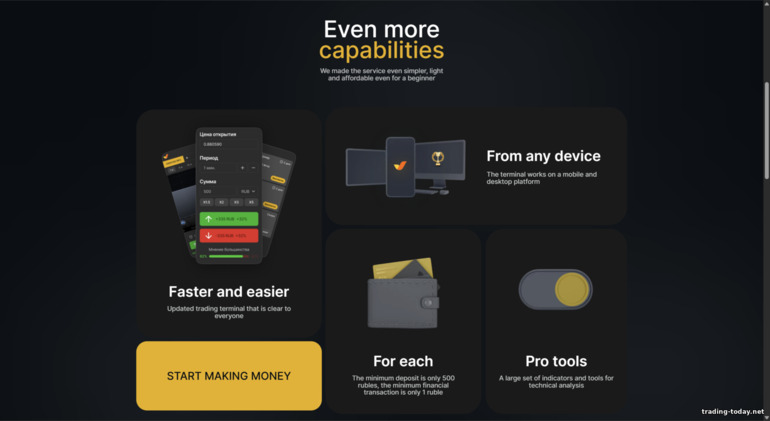

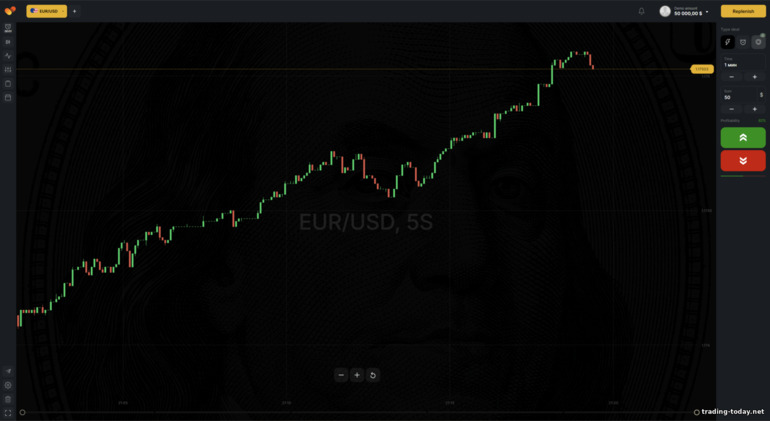
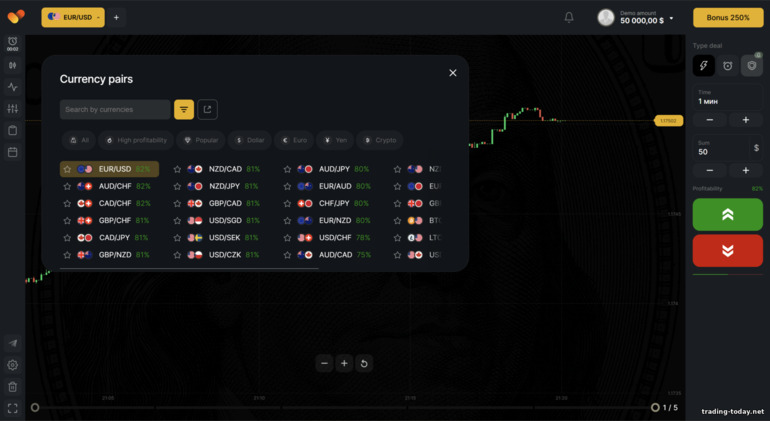
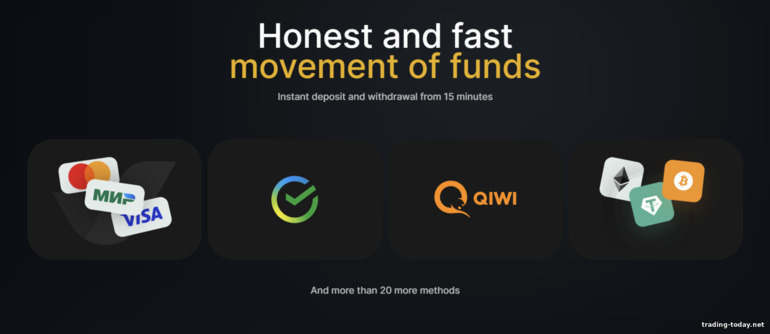
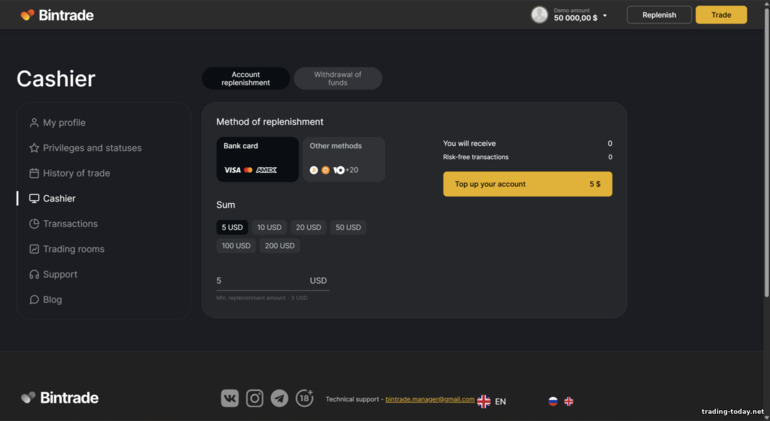
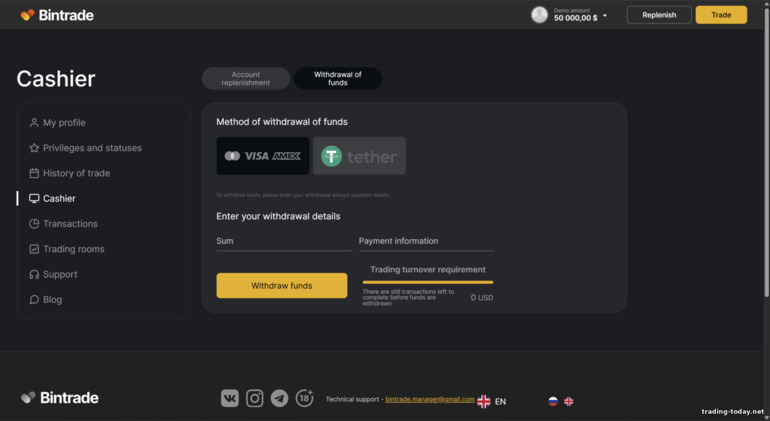
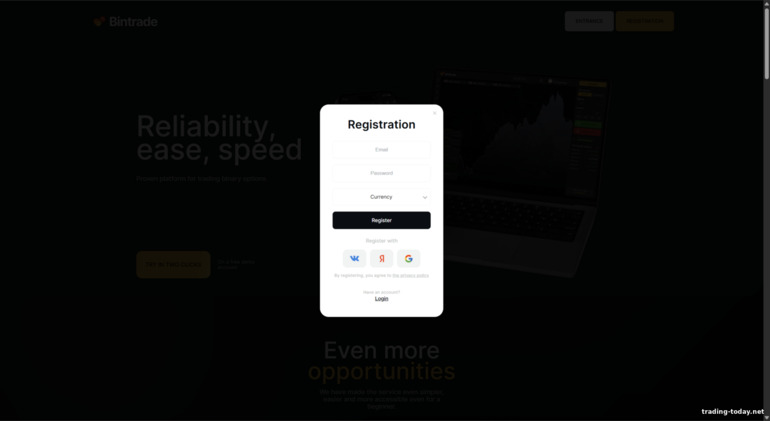

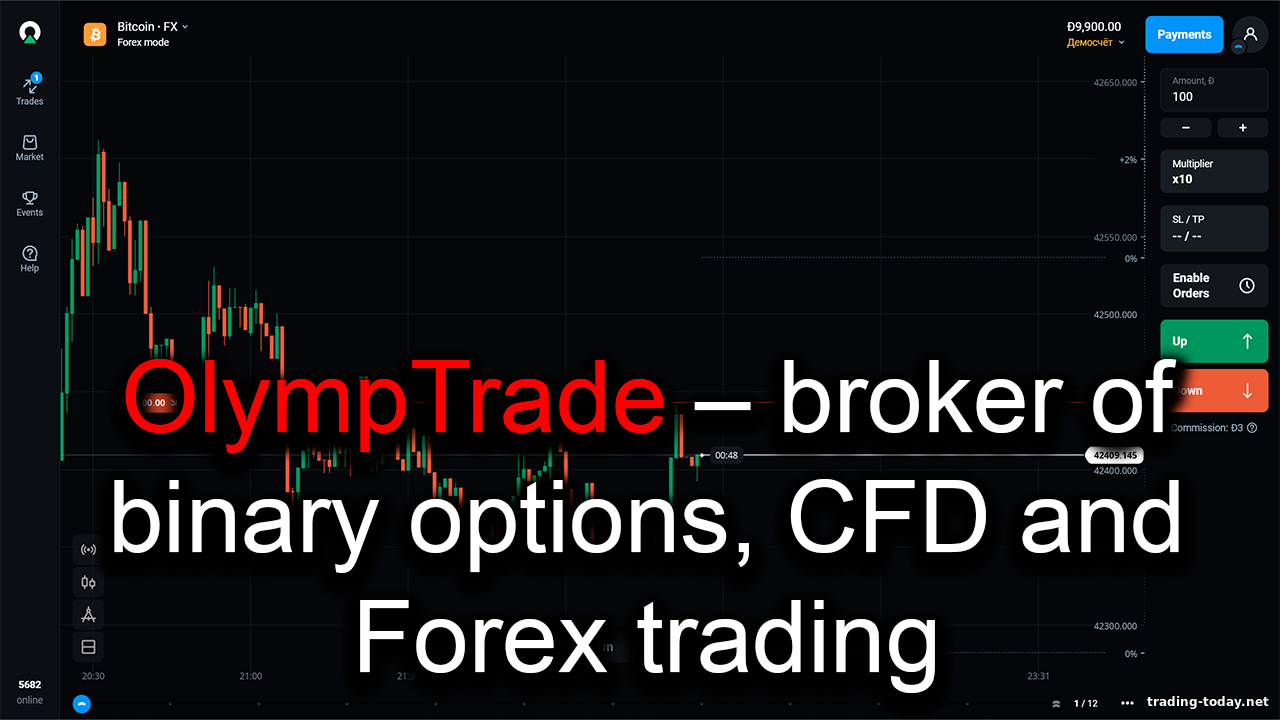
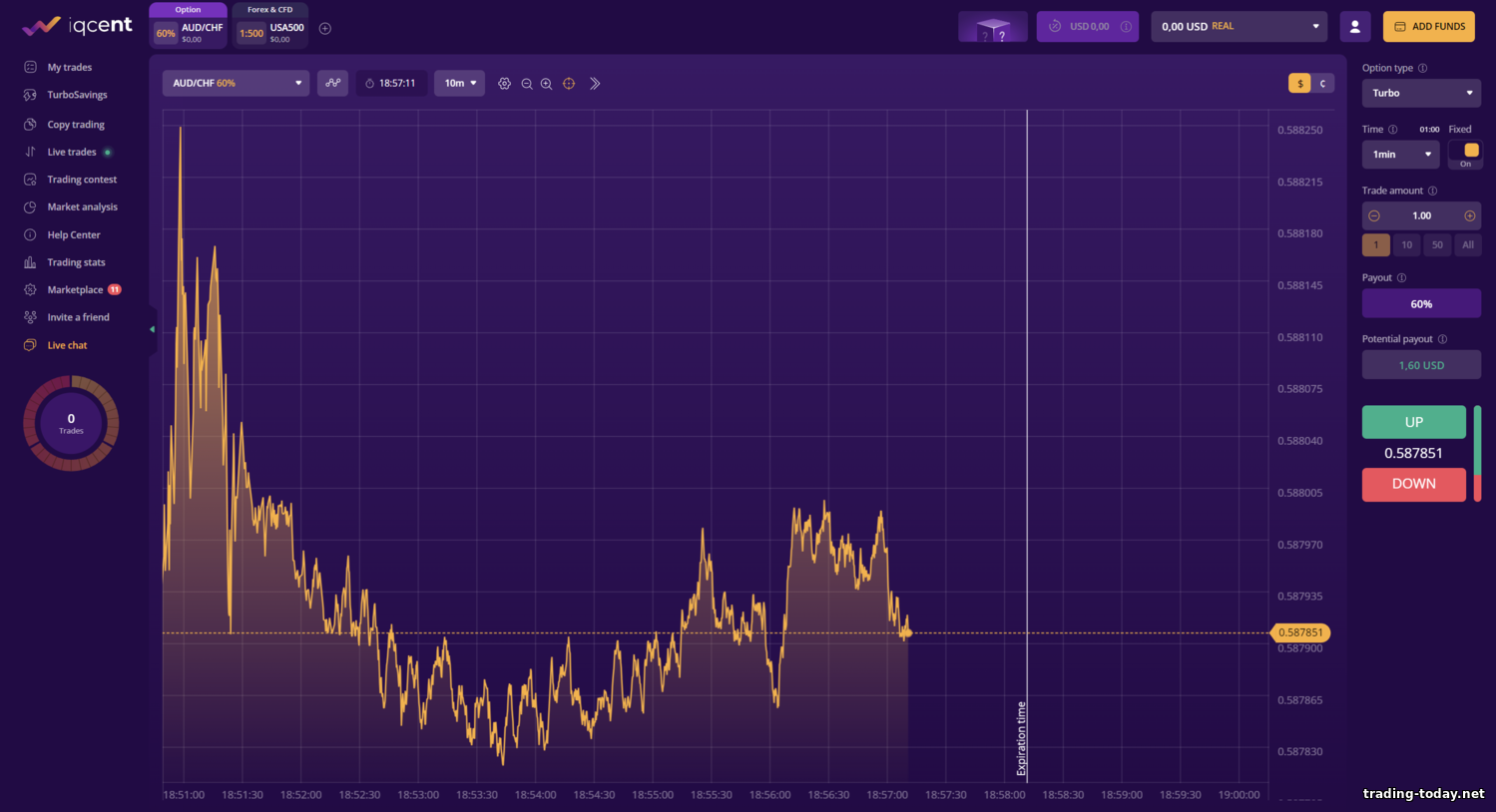

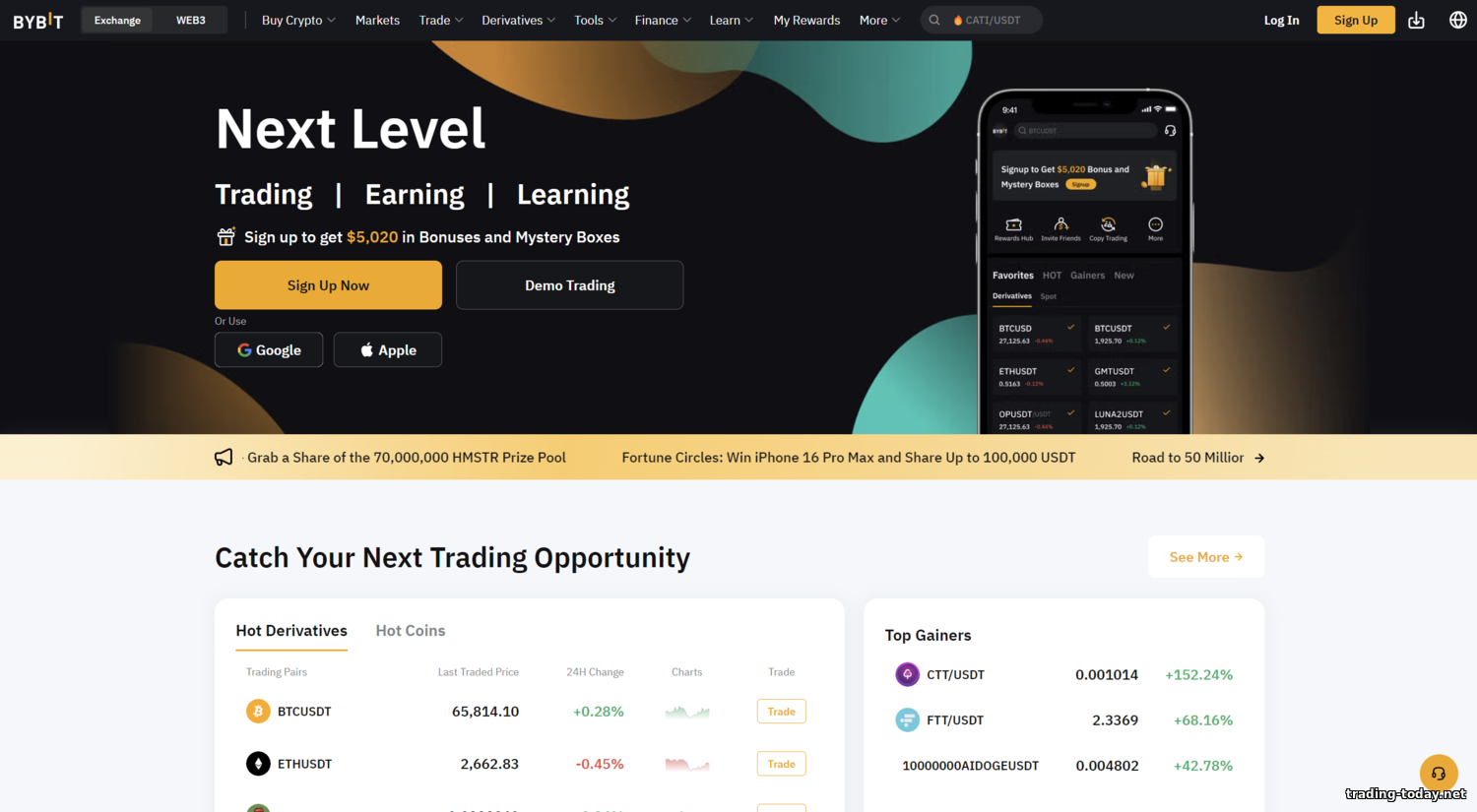


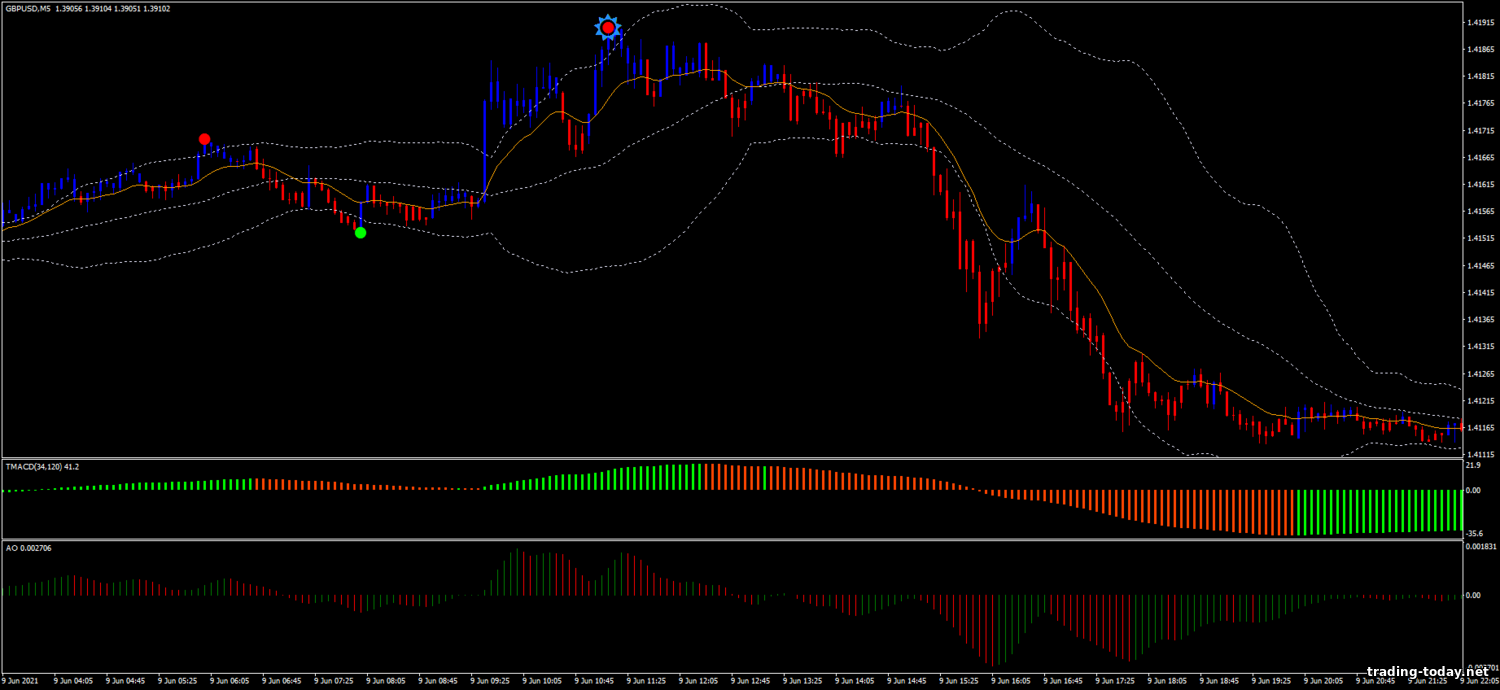

Reviews and comments